Welcome to FVTU
It’s Banquet Time!
Coming up on May 17 at Grouse Mountain Lodge in Whitefish, Montana it’s the amazing 2025 Flathead Valley Trout Unlimited Annual Fundraiser Banquet! Join us in Whitefish for the social event of the season. There will be Raffles galore, Door Prizes, Great Food and at the end of the evening some lucky person will walk away with a new 14-ft NRS Silipstream Raft Package complete with fishing frame and oars. You won’t want to miss this one!
You can get more information at our Annual Banquet page.
April 2025 General Membership Meeting
Tuesday April 15th will mark the final general membership meeting for this season before our annual fundraiser banquet. Then it’s time to head off for a fun summer of fishing. These are not your grandfather’s FVTU meetings. We meet at Sacred Waters Brewing Company north of Kalispell and there you can enjoy a great dinner and down a cold brew while you watch some great presentations.
We’re seeing more and more families, so don’t hesitate to bring the entire clan. Our April meeting will feature Thompson Smith, historian for the Confederated Salish and Kootenai Tribes. Thompson will give a presentation on the history and cultural significance of bull trout to the Tribes. This should be an interesting and informative presentation and one you won’t want to miss.
Meeting is scheduled for 6pm at Sacred Waters, we hope to see you there.
FWP Proposes New Round of Swan Lake Netting
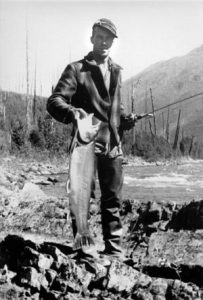 The Fish, Wildlife and Parks Commission and MFWP have made a proposal to restart netting of invasive Lake Trout from Swan Lake. Swan Lake historically supported one of the strongest bull trout populations in Montana and constituted one of the very few places anglers could still fish for threatened bull trout. Beginning in 1998 anglers began to catch invasive lake trout in Swan Lake and throughout the drainage. In 2006 a test program of lake trout removal began. A private contractor with experience in lake trout netting was hired and netting continued until 2016 with significant declines in the lake trout population.
The Fish, Wildlife and Parks Commission and MFWP have made a proposal to restart netting of invasive Lake Trout from Swan Lake. Swan Lake historically supported one of the strongest bull trout populations in Montana and constituted one of the very few places anglers could still fish for threatened bull trout. Beginning in 1998 anglers began to catch invasive lake trout in Swan Lake and throughout the drainage. In 2006 a test program of lake trout removal began. A private contractor with experience in lake trout netting was hired and netting continued until 2016 with significant declines in the lake trout population.
“Since 2016, Swan Lake bull trout and kokanee abundances have declined while lake trout have increased considerably. Bull trout redd (spawning nests) counts in 2023 revealed the lowest number on record. Additional lake trout population assessment and modeling since 2016 has shown that increased gillnetting effort to remove lake trout could positively influence bull trout abundance. FWP intends to increase lake trout monitoring in 2024 before implementing a full management action in 2025. Management action includes substantially increased gillnetting efforts to remove multiple cohorts of lake trout with concurrent monitoring of bull trout and kokanee to ensure negative impacts to bull trout abundance is minimized and to improve kokanee abundance. Specific techniques and timing of removal efforts will be determined after MEPA compliance and analysis of data is complete.” (from 2018 Swan Lake netting final report)
Flathead TU encourages everyone to encourage resumption of netting and removal of invasive fish from Swan Lake and the entire drainage. If something is not done soon, we will certainly lose this important bull trout population along with the loss of a popular, resident kokanee fishery.
For more information, please see the Final Report of the netting from 2018.
Get the facts on Canadian mining pollution in the Kootenai River
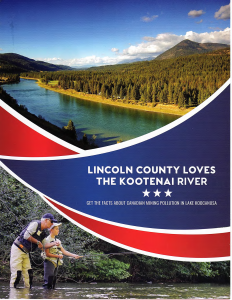 British Columbia’s Elk River Drainage upstream from Lake Koocanusa is a major coal mining area. Heavy metal pollution – particularly Selenium – leaches from the waste rock dumps near those mines. Even small levels of Selenium can be toxic to fish and other water life. Selenium builds up in the river ecosystem – and is nearly impossible to remove. It’s far better to prevent pollution than try to clean it up later.
British Columbia’s Elk River Drainage upstream from Lake Koocanusa is a major coal mining area. Heavy metal pollution – particularly Selenium – leaches from the waste rock dumps near those mines. Even small levels of Selenium can be toxic to fish and other water life. Selenium builds up in the river ecosystem – and is nearly impossible to remove. It’s far better to prevent pollution than try to clean it up later.
Get the facts from Montana Trout Unlimited and join us in pressing our elected officials to join in an effort to defend the clean water in the Kootenai River and Lake Koocanusa from cross-border pollution.
Oil and Water in the Flathead
The Middle Fork of the Flathead River and the entire drainage is under imminent threat due to Bakken oil train traffic. The corridor is a designated Wild and Scenic area surrounded by Glacier National Park, The Bob Marshall Wilderness Complex, protected National Forest and Montana State Lands. Each week 10-18 trains carrying more than 100 tank cars, each containing up to 30,000 gallons of Bakken crude oil from North Dakota traverse this steep, dangerous canyon. The railroad along the Middle Fork has a long history of derailments due to the unstable terrain and poor track maintenance. Any oil spill in this steep canyon would be quickly beyond any cleanup effort. This is an important discussion that the community needs to push forward.
See the story in the Flathead Beacon. Flathead TU partnered with other local organizations to film a video about the problem. Watch the important video below and learn more at flatheadlakers.org
 Don’t forget to join Flathead Women on the Fly for their monthly fly tying night and other activities on the second Tuesday of each month. Contact Kim at 406-885-3228 for the next event. Check out their Facebook page or visit their exciting website at; flatheadwomenonthefly.com
Don’t forget to join Flathead Women on the Fly for their monthly fly tying night and other activities on the second Tuesday of each month. Contact Kim at 406-885-3228 for the next event. Check out their Facebook page or visit their exciting website at; flatheadwomenonthefly.com
FWOTF is a group of women who like to fly fish and those who would like to learn fly fishing skills. It’s about fun, support, community and learning. Watch for updates on their Facebook page and on their upcoming website.
Catch and Release – It only makes sense
Flathead Valley Trout Unlimited produced the following short video public service announcement on proper Catch and Release techniques.
If you would like to use this video in either 30 or 60-second versions, you can download the following files;
If you would like HD versions of either video, please contact Flathead TU
Illegal Introductions: Stupid people do stupid things.
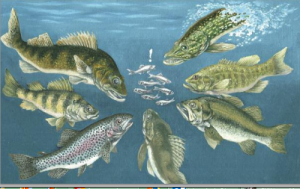
Whether it is Smallmouth bass in Seeley Lake, Walleye in Noxon Reservoir and Swan Lake, Perch in Rogers Lake, or Northern Pike in the Stillwater Lakes, illegal fish introductions in Montana’s waters do irreparable harm to our state fisheries. Montana has documented 600 illegal introductions of fish in 300 of Montana’s waters. More than 25% of those incidents have occurred in the past 10 years. Recently, Montana Fish, Wildlife and Parks introduced new rules for dealing with unlawful bucket biology. Offenders are now liable for a fine of $2,000 to $10,000 and can be made to pay the cost of remediation, which can run to hundreds of thousands of dollars.
The new rule requires FWP to investigate reports of unauthorized fish plantings within 30 days of learning about them, followed by an action plan to deal with the introduction. Flathead Valley TU supports the intent and implementation of these new rules and encourages the public to be aware of illegal actions that can drastically hurt our fishing opportunities. A recent article in the May-June issue of Montana Outdoors Magazine highlights the damage that these stupid people are inflicting on our precious fisheries resources.
Montana Trout Unlimited along with its affiliated statewide chapters have offered a reward of up to $10,000 for the arrest and conviction of anyone illegally dumping fish into our waterways to help stem the increasing tide of illegal introductions. Along with the TU reward, other angling organizations have put up an additional $4,200 and the Montana TIP-MONT program will chip in another $1,000. Altogether, you could be eligible for more than $15,000 for your help in catching and convicting unlawful bucket biologists. The money will be available through FWP’s TIP-MONT program
“Ten thousand dollars is a lot of money, but when you consider lost fishing opportunities, economic cost to local communities and the cost of getting rid of invasive species, this is an important investment,” said Montana TU Conservation Director Mark Aagenes.
It’s time to get tough on those few jerks who think they can better manage our fisheries through unlawful actions than can our professional resource managers. These selfish folks need to understand that there are serious consequences to their actions. Please support the new bucket biology rules by reporting these criminals.
 Flathead Valley Trout Unlimited is currently supporting the Confederated Salish and Kootenai Tribes in their effort to reduce the overabundant population of lake trout in Flathead Lake in order to benefit native fish species and enhance the fishery in the Flathead River system. The CSKT published a final Environmental Impact Statement on their plan to suppress the lake trout population in Flathead Lake using a variety of methods and strategies that support the Co-Management plan developed by CSKT and the Montana Department of Fish, Wildlife and Parks.
Flathead Valley Trout Unlimited is currently supporting the Confederated Salish and Kootenai Tribes in their effort to reduce the overabundant population of lake trout in Flathead Lake in order to benefit native fish species and enhance the fishery in the Flathead River system. The CSKT published a final Environmental Impact Statement on their plan to suppress the lake trout population in Flathead Lake using a variety of methods and strategies that support the Co-Management plan developed by CSKT and the Montana Department of Fish, Wildlife and Parks.
Read the CSKT Final EIS: Proposed Strategies to Benefit Native Species by reducing the abundance of lake trout, Flathead Lake, Montana.
Please read comments by Montana Fish, Wildlife and Parks on the proposed EIS along with detailed rebuttal by CSKT
Press Release: CSKT Tribal Council Recommends a Preferred Alternative
Flathead TU Comments on the Draft EIS
Montana TU Comments on the Draft EIS
U.S. Fish & Wildlife Service Comments on the Draft EIS
CSKT 2014 Implementation Plan for the Flathead Lake and River Fisheries Co-Management Plan
For more information on the plight of our native fish, read Facts About Flathead Lake and the NEPA Process
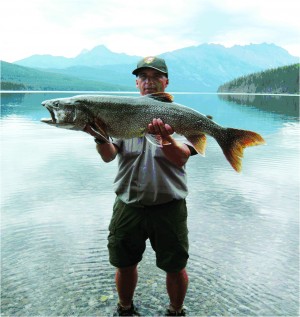
Glacier National Park
In addition to efforts at Flathead Lake, other projects throughout the basin are addressing the problem of invasive nonnative fish. In Glacier National Park, lake trout have invaded nine of twelve lakes on the west side of the park and have placed important native fish populations at risk. In several of the infested lakes, the native bull trout populations are in imminent danger of extinction.
The Park Service is charged with protecting native species in our national parks for the enjoyment of future generations.
“It’s a huge ecological health issue,” said Clint Muhlfeld, a Glacier-based fisheries scientist with the U.S. Geological Survey. “A lot of the populations are functionally extinct in the park right now.”
Glacier National Park has taken on the large job of protecting and restoring its remaining native fish populations. In 2009, they began a project of gillnetting lake trout in Quartz Lake and recently released a plan to add a restoration effort on Logging Lake. Flathead Valley Trout Unlimited is fully supportive of this effort. Follow the links below for more information on these and other projects by the National Park Service to protect the genetic integrity of our native species.
Preservation of Threatened Bull Trout in Glacier National Park.
Char Wars MSU scientists wade into fight against invasive lake trout in Montana’s national parks Large-Scale Removal of Lake Trout in Quartz Lake – Environmental Assessment Environmental Assessment for Continued Lake Trout Suppression on Quartz Lake & Lake Trout Removal and Bull Trout Conservation in the Logging Lake Drainage.
Swan Lake and Swan River Native Fish Restoration Efforts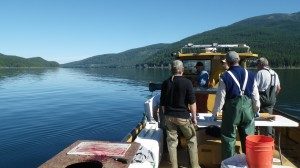
Swan Valley Bull Trout Working Group
2018 Swan Final Summary 2005 – 2017 (pdf)
2015 Summary Report (pdf)
2014 Summary Report (pdf)
2013 Summary Report (pdf) – From Montana TU
2012 Summary Report (pdf)
